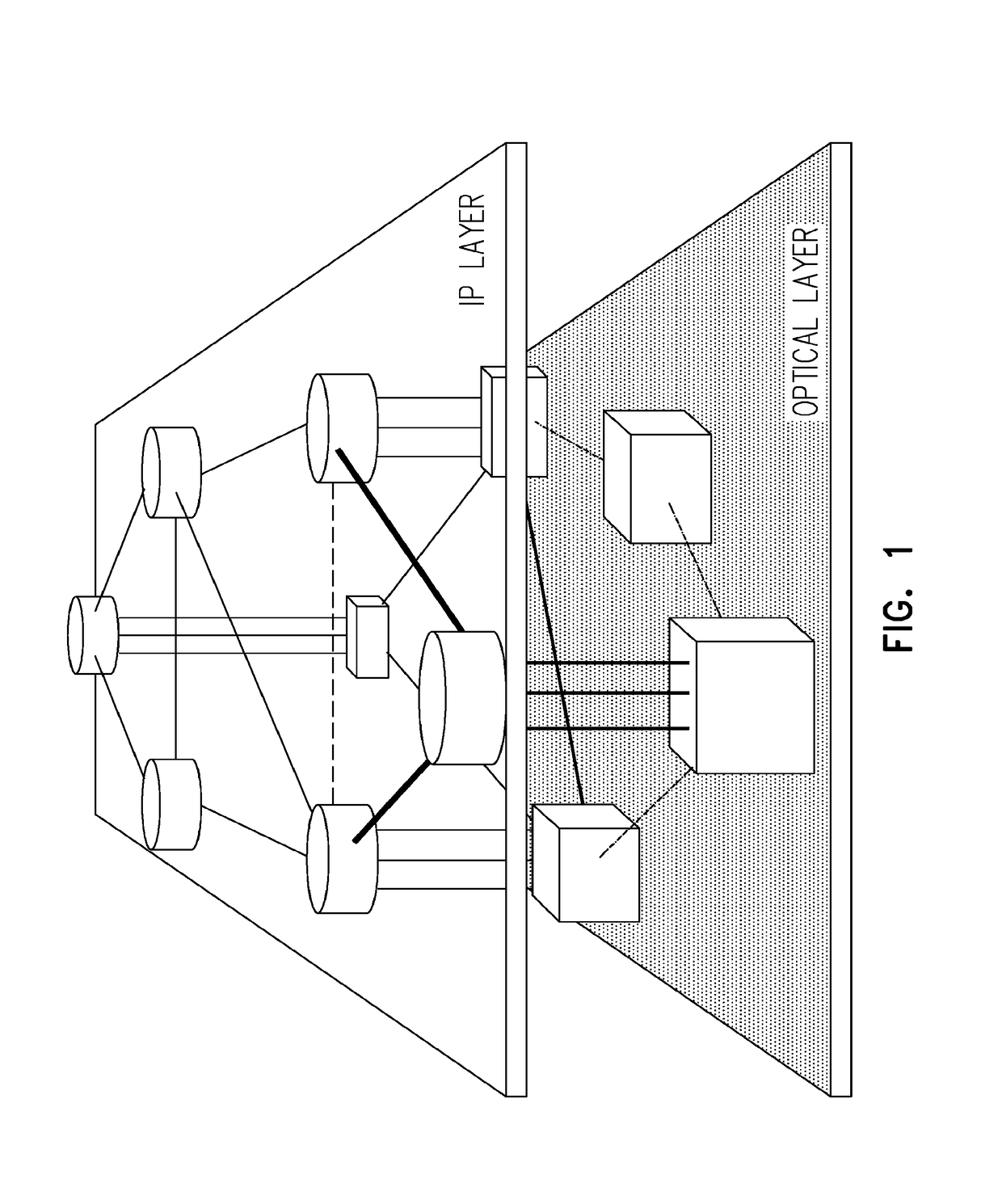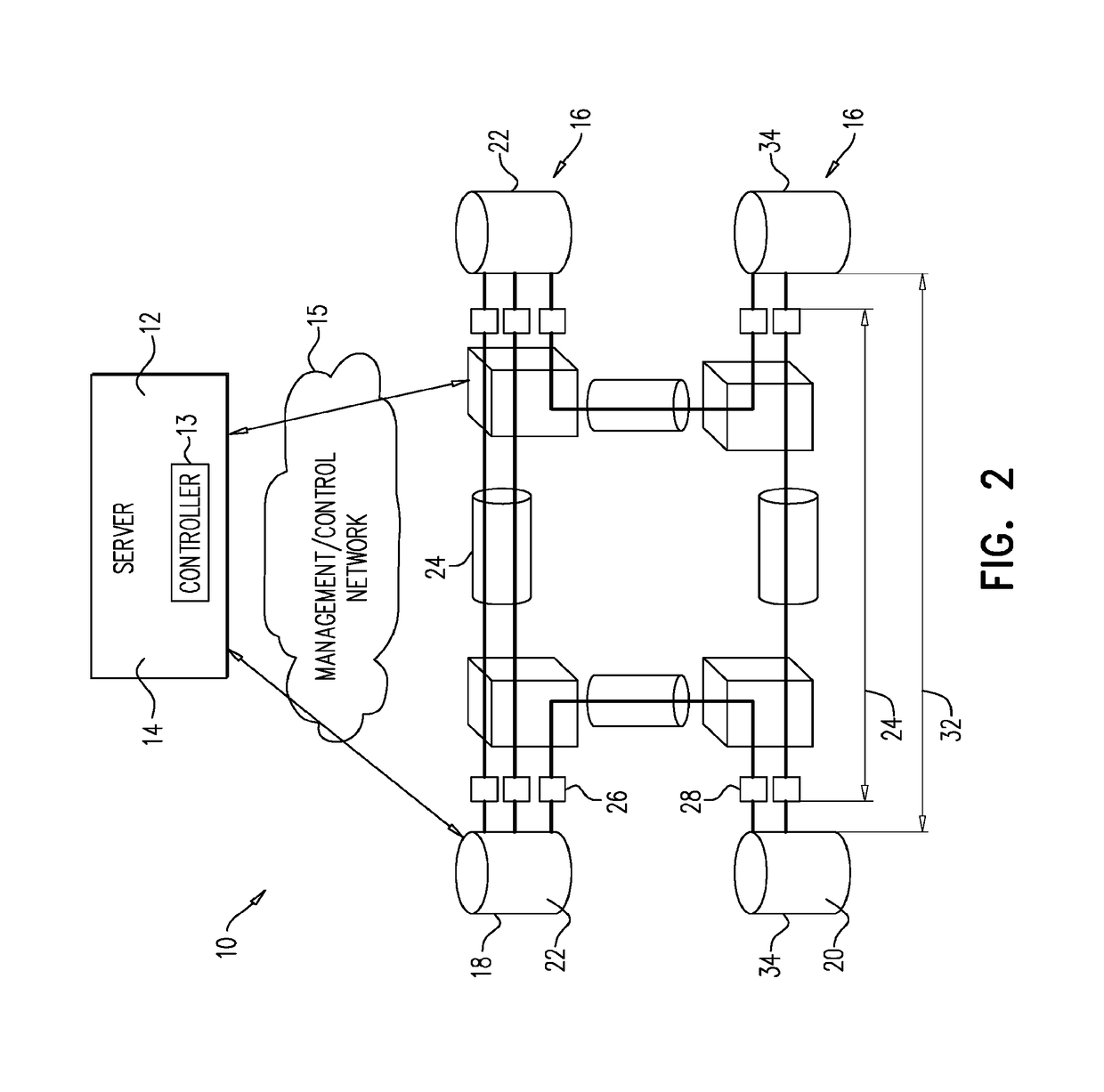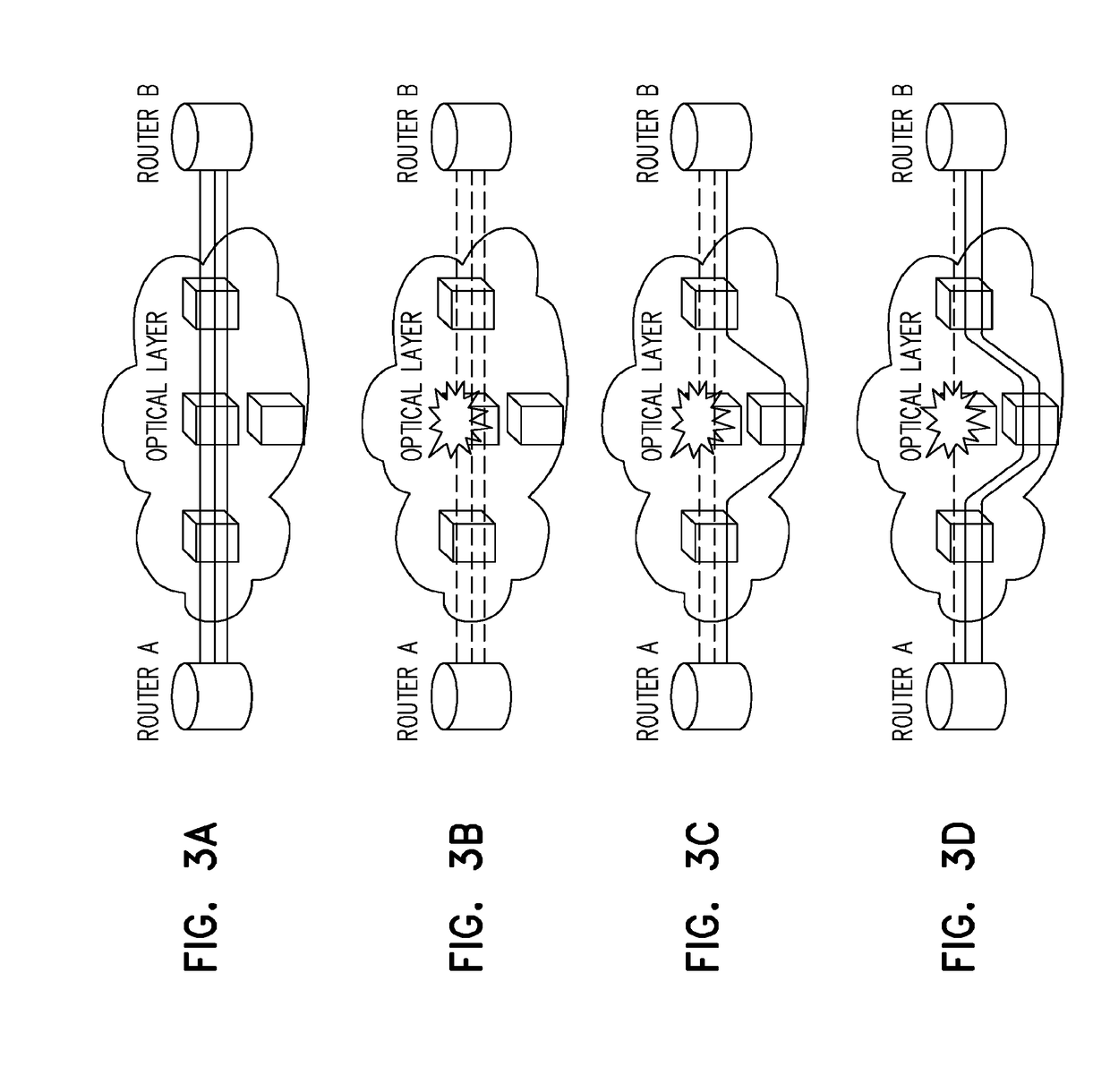Systems and methods for managing multi-layer communication networks
a multi-layer communication and network management technology, applied in data switching networks, digital transmission, hybrid transportation, etc., can solve the problems of affecting a large amount of users, the restoration path established by the optical layer may not meet the demands of the ip layer, and the latency of the optical layer is too high to be useful for the ip layer, so as to minimize the impact of communication through the network and restore communication failures
- Summary
- Abstract
- Description
- Claims
- Application Information
AI Technical Summary
Benefits of technology
Problems solved by technology
Method used
Image
Examples
example 1
Network Restoration
[0183]The network illustrated in FIG. 10 includes 4 IP routers 11-14, 4 ROADMs (optical routers) 21-24, 4 spare router ports connected to the optical layer 41-44, and 6 optical links 31-36.
[0184]The length of optical links 31-34 is 10 km while link 35 is 50 km long and link 36 is 40 km long. Upon failure of link 31. IP links 51 and 52 fail. The shortest alternate optical path for these IP links goes through optical links 33, 32 and 34 (30 km). However, this path will force IP link 51 and 52 to share optical links with IP links 53-55, compromising the network in an event of another optical failure. Such a compromise may violate the IP layer policy of the service provider. The alternate path (33, 32, 34) is a likely choice for pure optical restoration since the optical layer is not aware of the diversity needs of the IP layer.
[0185]The present system will identify the path through optical links 35 and 34 as the better alternative since the resulting IP links will on...
example 2
Applying Traffic Engineering (TE) Metrics in Network Restoration
[0188]One approach for restoration described hereinabove assumes that the IP layer at restoration does not reroute traffic that is not suitable for the newly established restoration path.
[0189]In order to ensure that services with a low latency requirement retain the required latency while the network. is using longer optical paths when restoring some IP links, restoration of IP layer traffic can be effected along with modification of traffic engineering (TE) metrics, such as the latency of the link for the restoration path. This ensures that if latency of the restoration path of an IP link is too high, the routers will become aware of this change, and this link will not be used for latency-sensitive traffic. A similar approach can be used for the cost of the restoration path. If the cost increases due to routing through regenerators, or due to the increased length of restoration path, then the pertinent link metric mus...
example 3
Port-Matching via Traffic Count
[0192]Several approaches can be used to match client and server ports based an traffic counts through these ports. A group of N client and server ports is selected and samples are collected from these ports at fixed intervals. Two types of traffic counters can be used:[0193](i) Counters of the number of packets on the port; and / or[0194](ii) Counters of the number of bytes (octets) on the port.
[0195]The collected samples are pre-processed to verity that there is a sufficient number of samples for the algorithm. Gaps caused by missing samples are filled via, for example, interpolation. Sampling periods with decreasing samples values caused by, for example, manual reset of counters are ignored and byte counters for equipment that does not count some of the packet headers are adjusted accordingly. A “match value” that represents the likelihood of a match between every pair of ports, is then calculated according to one of the following approaches:[0196](i) ...
PUM
 Login to View More
Login to View More Abstract
Description
Claims
Application Information
 Login to View More
Login to View More - Generate Ideas
- Intellectual Property
- Life Sciences
- Materials
- Tech Scout
- Unparalleled Data Quality
- Higher Quality Content
- 60% Fewer Hallucinations
Browse by: Latest US Patents, China's latest patents, Technical Efficacy Thesaurus, Application Domain, Technology Topic, Popular Technical Reports.
© 2025 PatSnap. All rights reserved.Legal|Privacy policy|Modern Slavery Act Transparency Statement|Sitemap|About US| Contact US: help@patsnap.com



